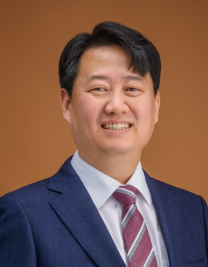- * 프린트는 Chrome에 최적화 되어있습니다. print
차세대 태양전지 연구실은 페로브스카이트 등을 활용하여 차세대 태양전지를 연구하고자 하는 실험실입니다. 태양전지는 1세대, 2세대 및 3세대 태양전지로 나눌 수 있다. 1세대 태양전지는 실리콘 태양전지이며, 2세대는 박막 태양전지이다. 3세대 태양전지는 유기태양전지, 염료감응형태양전지, 양자점 태양전지 그리고 페로브스 카이트 태양전지 등이 있다. 이 중 페로브스카이트는 연구역사가 가장 짧은 분야이지만 세계 최고 효율이 26% 이상으로 실리콘 태양전지에 버금가는 효율을 보이고 있다. 차세대 태양전지 고효율을 구현하기 위해서는 최적화된 광활성화층의 선택과 빛에 의해서 형성된 전공과 전자를 효율적으로 이동시킬 수 있는 박막제조 그리고 효율적으로 소자를 제조할 수 있는 연구가 필요하다. 본 연구실은 이러한 차세대 태양전지의 다양한 소재와 특성을 활용하여 세계 최고의 효율을 구현하는 연구실이다. 또한, 소면적 원천기술을 대면적으로 제조할 수 있는 연구도 함께 연구한다. 차세대 태양전지와 관련된 특성과 고도분석을 통해 차세대 태 양전지 효율을 향상시키며 이를 다양한 분야에 응용하여 기후변화에 대응에 이바지 하는 것이 본 연구실의 목표이다.
The STAR Lab (Solar cell Technology for Advanced Research Laboratory) is a laboratory that researches next-generation solar cells. Solar cells can be divided into first-generation, second-generation, and third-generation solar cells. The first generation is silicon-based solar cell, and the second generation is a thin film solar cell. Third-generation solar cells include organic photovoltaic, dye-sensitized solar cells (DSSC), quantum dot solar cells (QDs), and perovskite solar cells (PSCs). Among them, PSCs have the shortest research history, but the world’s highest efficiency is exceeding 26%, which is comparable to that of silicon solar cells. In order to realize the high efficiency of the next-generation solar cell, it is necessary to select an optimized photo absorption layer, to manufacture a thin film that can efficiently move the electrons and holes formed by light, and to study to manufacture whole process. Our laboratory is to realize the world’s best efficiency by utilizing various photo absorption materials and characteristics of next-generation solar cells. In addition, research that can manufacture small-area source technology in a large area is also researched. The goal of this laboratory is to contribute to responding to climate change by improving the efficiency of next-generation solar cells through analysis of characteristics and altitudes related to next-generation solar cells and applying them to various fields.
Major research field
차세대 태양전지 소자 고효율화, 신규물질 적용 차세대 태양전지 고효율화, 차세대 태양전지 특성 고도분석, 대면적 차세대 태양전지 연구, 차세대 태양전지 상용화 기술, 차세대 태양전지 자동화 공정기술
Desired field of research
태양전지와 연계된 응용기술, 태양전지 연계 수소생산기술, 태양전지 연계 에너지저장기술
Research Keywords and Topics
차세대태양전지, 고효율화, 대면적, 상용화
Next generation solar cells, High efficiency, Large area module, Commercialization
Research Publications
· Conformal quantum-dot electron-SnO2 transporters for efficient perovskite solar cells, Dong Suk Kim*, Science 2022, 375, 302.
· Pseudo-halide anion engineering for α-FAPbI3 perovskite solar cells, Dong Suk Kim*, Michael Grätzel*, Jin Young Kim*, Nature 2021, 592, 381.
· Stable perovskite solar cells with efficiency exceeding 24.8% and 0.3-V voltage loss, Sang Kyu Kwak*, Dong Suk Kim*, Changduk Yang*, Science 2020, 369 (6511), 1615.8
Patents
· 10-2018-0128719, Highly stable organic-inorganic hybrid photovoltaic solar cell and method for manufacturing the same
· 10-2018-0113101, Method of manufacturing uniform perovskite layer and solar cell with the perovskite layer and the same using
· 10-2016-0150515, Fabrication method of perovskite solar cell
국가과학기술표준분류
- EF. 에너지/자원
- EF06. 신재생에너지
- EF0601. 태양광
국가기술지도분류
- 환경/에너지 프론티어 진흥
- 031800. 태양에너지기술
녹색기술분류
- 에너지원기술
- 재생에너지(태양에너지)
- 214. 비실리콘계 태양전지 기타 기술
6T분류
- ET 분야
- 에너지
- 050211. 에너지소재기술




